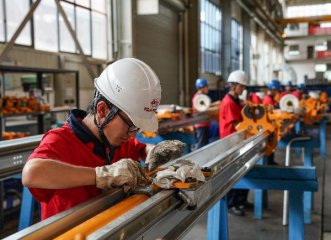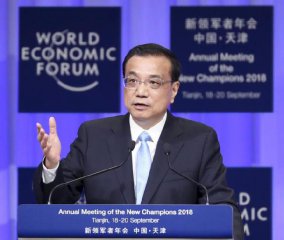
As the Chinese economy slows, economists say trade tensions are only part of the equation.
Gross domestic product in China expanded at its weakest pace in nearly a decade from July through September, with growth in the manufacturing sector slowing to a near standstill. The Shanghai Composite is down about 25% this year.
But even in the face of hundreds of billions of dollars' worth of tariffs between Washington and Beijing, exports have continued to hold up better than expected. China shipped 11% more products out of the country in October than it did a year earlier, according to a Reuters poll, slower than the previous month's 14.5% export growth but faster than August's 9.8% rise.
The US was the destination for about 18% of Chinese shipments in 2017. Brad Setser, a senior fellow on the Council of Foreign Relations who previously served as an economist at the Treasury Department, said it would be difficult but possible to offset that loss.
"You would sort of expect that supply chains would reorganize," Setser said. "But that's going to take some time."
To be sure, exports may have received a boost from a weaker yuan and companies rushing orders ahead of expected price increases. But economists say it also shows the slowdown this year is largely thanks to a state-led deleveraging campaign that was started last year in attempt to deal with excess debt. Most notably, authorities had attempted to crack down on risky lending as part of the program.
Stephen Roach, a senior fellow at Yale University's Jackson Institute for Global Affairs who previously served as chairman of Morgan Stanley in Asia, said tariffs would exacerbate the policy-engineered slowdown that's already in place. But that doesn't necessarily mean there is enough pressure to force meaningful concessions anytime soon.
"It's a tough combination," Roach said.
"Does that mean that they're about to capitulate and cut a deal as the Art-of-the-Deal president seems to be hinting at? I think that's dubious at this point, especially if the US is looking for a deal on these core strategic issues that have driven a wedge between us."
In addition to reducing the trade deficit, the White House has also called on Beijing to address intellectual-property-theft rules and its Made in China 2025 program. With analysts skeptical that Chinese leader will easily budge on those economic requests, a deal with President Donald Trump at an expected meeting this month appears unlikely.
The US has placed import taxes on roughly half of China's exports to the US, and Trump has threatened to increase tariff rates and extend those to all shipments from China. Beijing has retaliated, but it doesn't import enough from the US to match duties dollar-for-dollar. China sold about $506 billion worth in goods and services to the US in 2017, while the US sold roughly $130 billion worth to the Chinese.
"China can outlast the U.S. in an extended trade war, but only if voters here react negatively to it," said Gregory Wawro, a political science professor at Columbia University.
"That seems to be what Beijing has banked on, but so far the reaction seems to be muted even among those who are experiencing some pain due to the tariffs."
























Latest comments